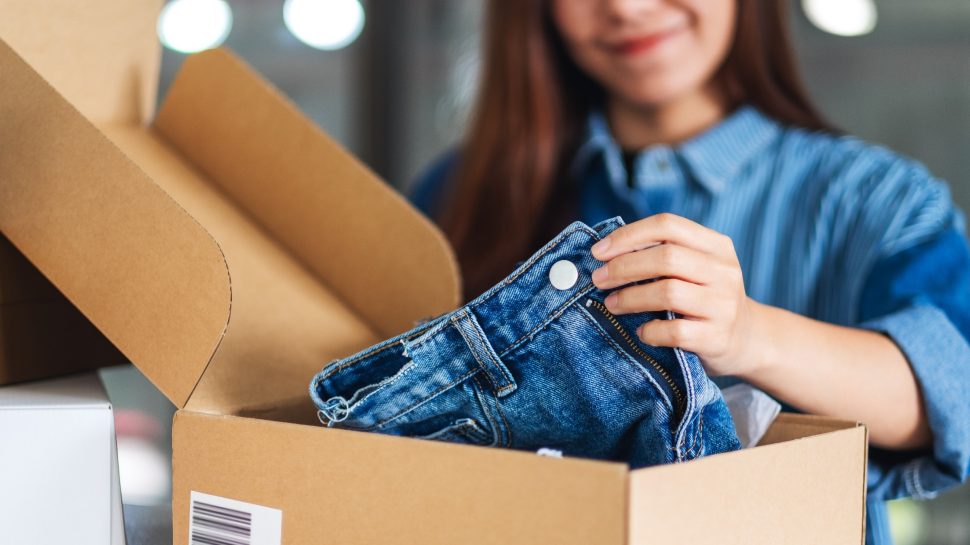Is your business ready for the 'recommerce' revolution?
Recommerce is changing the retail landscape, one pre-loved item at a time. As we explore below, it’s good for consumers, it’s good for brands, and it’s great for the planet.

90% of buyers engaged in recommerce in 2022.
Key points
- The trend towards recommerce and the circular economy is growing.
- Recommerce helps reduce carbon emissions and diverts waste from landfill.
- For brands, recommerce helps boost customer loyalty and can lead to revenue gains.
The recommerce revolution is here
Cost-of-living pressures are affecting many households around Australia right now. It’s a time of careful budgeting, thriftiness and bargain-hunting; of visits to garage sales, op shops and online marketplaces like eBay.
Of course, thrifting is nothing new. But the act of buying pre-loved products is definitely on the rise. Not only does it help household budgets go further, but it’s also great for the environment, too—with sustainably-minded consumers looking to source secondhand instead of always buying brand new No wonder, according to eBay, the global pioneer of the recommerce movement, 90% of buyers engaged in recommerce in 2022.
And, increasingly, brands are jumping on board. For example, Australian online fashion retailer birdsnest launched birdsnest rehatched in late 2022, giving shoppers the opportunity to buy ‘like-new’ secondhand items at a cheaper rate. It’s their way of embracing the circular fashion economy and, as we’ll explore below, it’s having a great impact.
But first, let’s take a look at the meaning of recommerce and why it’s gaining momentum amongst both brands and consumers.
What is recommerce?
Recommerce, also known as reverse commerce, refers to the buying and selling of previously owned goods—giving these pre-owned items a second lease of life and keeping them out of landfill.
These days, everything from electronics and appliances to high-end fashion and furniture are resold. The sales themselves can take place through both physical and online channels, like online marketplaces and individual brands’ own stores.
Recommerce is good for the environment
Recommerce, which is all about keeping pre-loved and refurbished items in market for longer, delivers two key environmental benefits: a reduction in carbon emissions and less waste.
In 2022 alone, for example, eBay helped the planet avoid 1.6 million metric tonnes of carbon and 73,000 metric tonnes of waste going to landfill, according to its Recommerce Report.
Dig a little deeper, and other environmental benefits become clear. An electronic item that’s resold online helps reduce the need to mine critical minerals. A piece of pre-loved furniture that’s bought on a local Facebook marketplace negates the need for lengthy transport.
Recommerce is great for brands
It’s not just the environment that’s set to benefit from the recommerce revolution. Brands that embrace recommerce can experience a range of benefits, including:
- Increased customer loyalty
- Heightened brand perception, tied to sustainability metrics
- A way to move overstocked products
- An opportunity to reduce manufacturing costs
Benefits like these all could lead to revenue gains and a boost to the bottom line—which is just one reason why birdsnest rehatched was born.
Birdsnest builds loyalty and sustainability
Birdsnest rehatched is a great example of how one brand can establish a resale arm that doesn’t impact other areas of the business. Since launching rehatched, birdsnest’s regular online store has continued to thrive—while the preloved section satisfies customers’ growing demand for secondhand clothing.
All this, while helping the brand become more sustainable. As founder Jane Cay explains, “Birdsnest rehatched is part of us taking responsibility for the clothing we bring into the world. Our goal is to make participating in a more circular fashion economy simple, fun and convenient for our community—while naturally changing shopping habits and extending the lifecycle of our clothes.”
The brand has made it a priority to simplify the resale process for customers. “Our particular resale model is unique, as we host the platform from start to finish. This means birdsnest is now a one-stop-shop where new and secondhand items can be purchased simultaneously,” says Jane.
“For birdsnest customers, we’ve simplified the ability to rehome worn styles by doing all the work of listing and dispatching the pieces to their new owner. And when shopping the pre-loved range, customers receive the same first class experience they have come to know and love from birdsnest,” she says.
“The more that brands and businesses can talk about and offer more sustainable ways of purchasing, the more we invite opportunities for this way of thinking.”
How to sell pre-loved items online
Recommerce and the circular economy rely on community and collective action—and, as Jane notes above, the more brands, businesses and shoppers that join the movement, the better.
The good news? It’s easy to get started. If you’re thinking about launching a recommerce program for your own brand, here are some steps to consider:
- Define your goals and target audience
Why are you launching a resale program? Is it to boost your sustainability credentials? Reach new customers? Increase brand loyalty? Think about who you’re targeting and use these insights to tailor your recommerce program accordingly.
- Choose your model
Will you be managing the entire process yourself, or do you want to partner with an existing resale platform? The first option gives you more control but takes more time and effort. You could also consider a hybrid model, depending on your goals.
- Design your recommerce program
In this step, lay down all the rules or guidelines that both your team and your customers will need to know about. For example, which products are eligible for resale? How do you evaluate the condition of pre-loved products, and set their pricing? How will you make a profit?
- Plan operations and logistics
If you already run an eCommerce program, then this step should be relatively easy. Consider how you’ll receive, authenticate and store incoming goods, and how you’ll ship resold goods. Choose a logistics partner that can support your goals.
- Promote your program
Think about the customer experience and market the program in a way that clearly sells the benefits to them. This could include transparency around how you collect and authenticate items, or how you price them. Raise awareness about your program through targeted campaigns and customer engagement, such as an eDM to your existing customers, influencer partnership promoting your program and updating your website and FAQs.
Whether the aim is to boost sustainability credentials, engage eco-conscious consumers or unlock revenue through resale, businesses—particularly in fashion—could see huge benefits from introducing a recommerce program. By taking the time to carefully plan, execute and monitor your program, you’ll be on your way to adding a sustainable new string to your retail bow.
Ready to elevate your business in 2024?
Ready to elevate your business in 2024?
The free 2024 Inside Australian Online Shopping: eCommerce Industry Report is now available. Uncover valuable insights from the previous year and stay ahead of the game.



